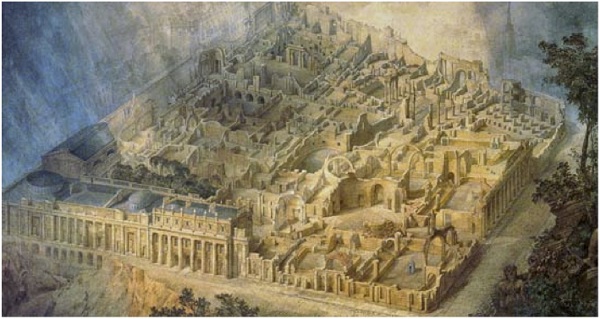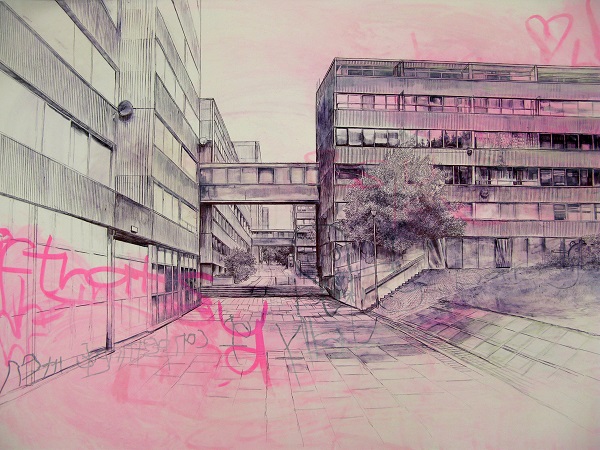Ruin Lust at the Tate Britain- Art Review
Ruin Lust at the Tate Britain
Ruin – the pinnacle achievements of the bourgeoisie laid to waste before their very eyes. Comprising of works from different periods, it would be difficult to chart their impact. More so, this is a study of depictions. How has the ruins been use? what were they trying to say? Compare and Contrast. Destruction by time, by war, by youth, by culture. It’s all here. The paintings of various artists was collected for this exhibition It was a strange thing to encounter. Rather than a focused exhibition this instantly blended in with the rest of the Tate Modern’s collections – though they are marked by time periods. In an era where Art has almost become synonymous with ‘Modern Art‘ – i.e. the readymades – there’s an air of nostalgia here. This was interesting to pick up on, as i’d recently been thinking about how the readymade had successfully destroyed art – changed the face of art altogether. Is it bad to do away with paintings in art galleries altogether? A historical collection would therefore be interesting in itself. This seemed like such an exhibition. Here paintings are collected by a thematic interest – Ruin.
Since the exhibition is such an amalgamation of styles and mediums it is very difficult to talk about it generally. A major element of Ruin Lust is the sheer differences between each piece. It would be difficult to make any comparisons that would give an accurate representation of the exhibitions success and failures. This diversity can be regarded as a strength but here it feels uncohesive. Mediums are stretched thin. Film is represented only by Kodak (d. Tacita Dean UK 2006) a rather strange choice for an exhibition about ruins. It is far too metaphorical, rather than than actually depicting ruins within context with the rest of the exhibit. The energy of the exhibition begins very strong. The paintings of John Martin are stunning (The Destruction of Pompeii and Herculaneum, 1822 featuring in the exhibition) but are strange to feature here. They have a strong presence in the exhibit, with the brilliant uses of colour and the use of the sky to dramatise the effect. The destruction depicted, though exciting, is more of a creation of ruins than the depiction of ruins. Is this a strenuous link? Furthermore, many of these early paintings are of imagined depictions like Gustav Dore’s The Newzealander in London; A Pilgramage, 1872 and Joe Grandy’s Aerial cutaway view of the Bank of England from the south-east, 1830. The Latter to envision an aerial depiction of ruins. However, in spite of the drastic differences between them they all share a fictional outlook.
Contemporary works feel more conceptual. Here the link between the artworks and ruins becomes even more strenuous. Five Sisters Bing, 1976 by John Latham, seems to suggest ruins by means of books. Though, in itself, not a terrible piece of art, it sits strangely amongst the other works presented in the exhibition. Especially since its aims feel very far from ruins. Other more contemporary works like Ferrier Estate, 2010 by Laura Oldfield Ford may be closer to ruins but are no less conceptual. The implication that buildings can become ruins through graffiti may not be the artists intentions but also feels like a stretched connection. The piece itself seems far more interested in class struggle or arts struggle with styles. There is certainly an interesting clash of styles, the ordered and well drawn buildings against the haphazard use of colour that is certainly separate to the rest of the piece whilst also being a part of it. The context of ruins only enters in the context of the rest of the exhibition and therefore this piece, like a few others, feels manipulated and forced to be something it is not.
The exhibition was interesting for the differences but lacked a lot of power and energy. The connections aren’t always entirely valid. Therefore this exhibition is largely forgettable. The other exhibitions at the Tate having more impact than this one – with a few exceptions. A love of Ruins, betrayed. A more comprehensive study of our attitude to ruins is required but unfortunately as an exhibition or rather as an essay this isn’t particularly successful.
Further Reading
Diving into the History of the World’s Obsession with ‘Ruin Porn’ – A Review
Ruin Lust Review – Transience, Doom and Lyrical Melancholy – A Review
Run Lust at Tate Britain, Art Review
Exhibition Ruin Lust at Tate Britain










Leave a Reply